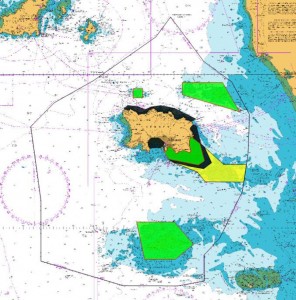Maërl in Jersey and The violet Bank
Jersey has a number of areas where you will find Maërl. This is the collective name for a Coralline red algae. We often find this on our guided seabed walks. Beyond Seymour Tower, the huge purple beds may well be the reason the area got its name “The Violet bank”.
We often find small pieces of Maërl on our Karame walks we we head almost two miles from shore on the lowest tides of the year. Advance booking is advised. You can find the dates of these low tide walks here:
Maërl is a seabed habitat of great conservation significance. Around Jersey the first signs of Maërl is usually the tiny purplish or bleached white coral like bits Lithothamnion corallioides scattered amongst rocks in the low tide zone. You will also see purple coloured rocks which are covered with Lithophyllum– a Coralline red algae. Maërl grows at a rate of about 1mm per year. It accumulates as unattached particles and forms extensive beds in suitable sublittoral sites.
Maërl beds act as nursery areas for the juvenile stages of many commercially caught fish species and juvenile scallops.
Maërl beds offer physical refuge and protection from predation as well as productive feeding grounds but are easily damaged by dredging and towed fishing gear.
Some Ormer fishermen tell me that where they see large areas of Lithothamnion they expect to find ormers. The baby ormers feed on a film of bacteria which grows on the Lithothamnion.

Proposed additional zones around Jersey closed to mobile gear MPAs (green) and maerl present (yellow)
Local research has identified a few key factors:
- Maërl is slow growing and essential to many species.
- One local sample has contained 21 species of crustaceans, including one crab not recorded locally for 100 years.
- After dredging, a survey in Scotland revealed a possible 70% drop in species inhabiting the Maërl beds.
- It is possible that damaged/destroyed Maërl beds could result in slipper limpet (an invasive species) infestation in the area which would stop Maërl growing.
Recently Jersey introduced restrictions on commercial dredging for scallops and also the use of mobile fishing gear in areas where Maërl is present. Since 2017 this includes Les Ecrehou.
Here is a link to a short Video with more information about Maërl.


